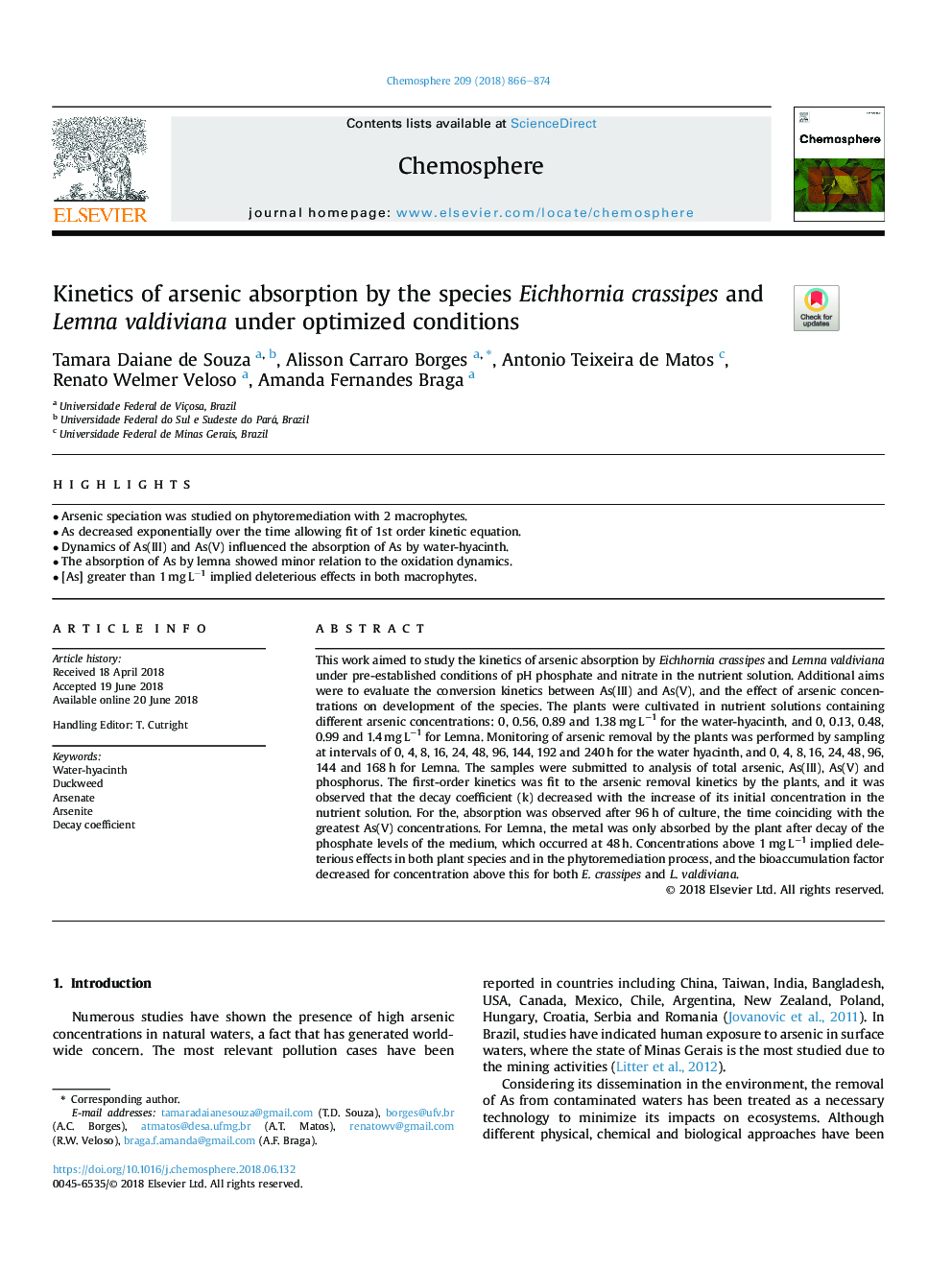| Article ID | Journal | Published Year | Pages | File Type |
|---|---|---|---|---|
| 8850659 | Chemosphere | 2018 | 9 Pages |
Abstract
This work aimed to study the kinetics of arsenic absorption by Eichhornia crassipes and Lemna valdiviana under pre-established conditions of pH phosphate and nitrate in the nutrient solution. Additional aims were to evaluate the conversion kinetics between As(III) and As(V), and the effect of arsenic concentrations on development of the species. The plants were cultivated in nutrient solutions containing different arsenic concentrations: 0, 0.56, 0.89 and 1.38â¯mgâ¯Lâ1 for the water-hyacinth, and 0, 0.13, 0.48, 0.99 and 1.4â¯mgâ¯Lâ1 for Lemna. Monitoring of arsenic removal by the plants was performed by sampling at intervals of 0, 4, 8, 16, 24, 48, 96, 144, 192 and 240â¯h for the water hyacinth, and 0, 4, 8, 16, 24, 48, 96, 144 and 168â¯h for Lemna. The samples were submitted to analysis of total arsenic, As(III), As(V) and phosphorus. The first-order kinetics was fit to the arsenic removal kinetics by the plants, and it was observed that the decay coefficient (k) decreased with the increase of its initial concentration in the nutrient solution. For the, absorption was observed after 96â¯h of culture, the time coinciding with the greatest As(V) concentrations. For Lemna, the metal was only absorbed by the plant after decay of the phosphate levels of the medium, which occurred at 48â¯h. Concentrations above 1â¯mgâ¯Lâ1 implied deleterious effects in both plant species and in the phytoremediation process, and the bioaccumulation factor decreased for concentration above this for both E. crassipes and L. valdiviana.
Related Topics
Life Sciences
Environmental Science
Environmental Chemistry
Authors
Tamara Daiane de Souza, Alisson Carraro Borges, Antonio Teixeira de Matos, Renato Welmer Veloso, Amanda Fernandes Braga,
